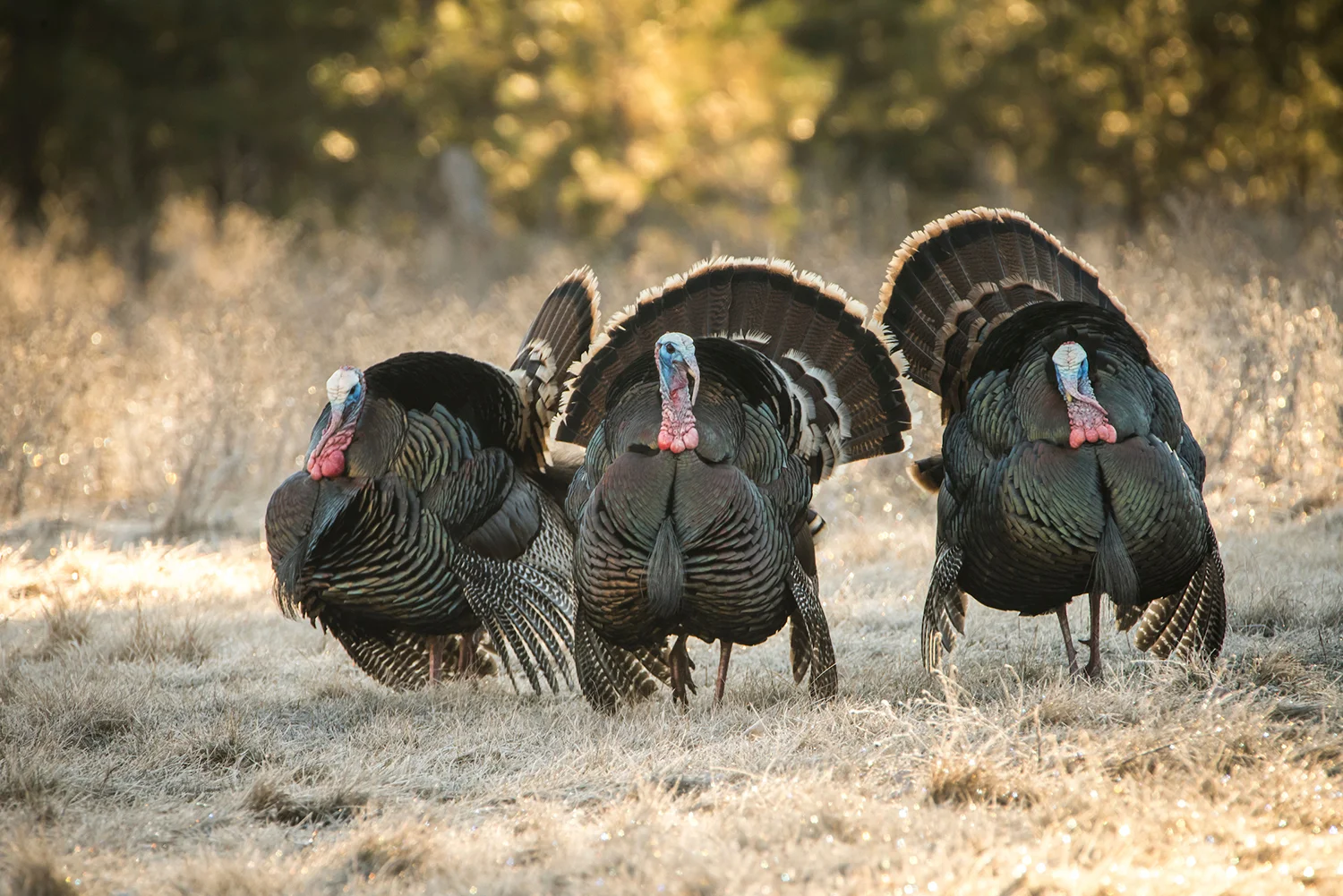This section is all about turkey hunting. You will find wild turkey hunting pictures, turkey hunting articles, video clips, hunting tips, and special hints. Don’t forget to check out the message board if you have any questions.
Turkey hunting enjoys such a dedicated following because it is so unique compared to other hunting types. It incorporates aspects of both small-game and big-game hunting. In some ways it is intense and in other ways, it is laid back, in some ways it takes a lot of skill and knowledge in other ways turkey hunting is as simple as it can be.
With turkey hunting, you have a bunch of toys to master (learn about turkey calls here). You can actually practice turkey hunting, or at least the calling aspects of the sport right at home. This isn’t something most other hunter groups get to do.
We all know that men are nothing more than big boys with more expensive toys. So turkey hunters get lots of enjoyment when they play with their toys, practice their slate calls, and mouth calls, or simply pack their vests for their next turkey hunting excursion. Some turkey hunters seem to get as much enjoyment from the preparation and strategizing as they do from the actual turkey hunt.
With the difficulty in getting that trophy gobbler and the fact that more often than not the turkey wins I can understand why the preparation is often more enjoyable than the hunt. We all like to hunt but getting made a fool of by a stupid bird takes its toll however it is exactly that toll that makes the successes and turkey hunting in general so damn enjoyable.
Must-Have Gear for Turkey Hunting
When it comes to turkey hunting, having the right gear is crucial. Here’s what you need:
- Turkey Calls: Learning how to use different calls is key. You can practice at home, which is a big plus.
- Camouflage Clothing: Turkeys have sharp eyes. Good camo helps you blend in and stay hidden.
- Shotgun and Ammunition: Choose a reliable shotgun and the right ammo for your hunt.
- Turkey Vest: Keeps your gear organized and easily accessible.
Scouting and Setting Up
- Tracks: Turkey tracks are distinctive, with a three-toed pattern. Look for these in muddy or soft ground.
- Feathers: Dropped feathers can indicate roosting or feeding areas.
- Droppings: Turkey droppings are J-shaped for males and spiral-shaped for females. Finding these can help you identify the presence of turkeys.
- Roosting Sites: Turkeys usually roost in trees at night. Look for areas with large trees where they can perch.
- Feeding Areas: During the day, turkeys feed in open fields or forests. Identifying these spots increases your chances of spotting them.
- Good View: Choose a spot with a clear line of sight to spot approaching turkeys.
- Stay Hidden: Use natural cover like bushes and trees to stay out of sight.
- Decoys: Set up decoys to attract turkeys. Place them within shooting range to draw turkeys close.
- Use Binoculars: Binoculars can help you spot turkeys from a distance without disturbing them.
- Keep Quiet: Move quietly and avoid sudden movements to prevent scaring turkeys away.
Final Thoughts
Turkey hunting is a unique and thrilling experience. The combination of preparation, strategy, and skill makes it incredibly rewarding. Enjoy the process, embrace the challenge, and savor the hunt. There’s nothing quite like the feeling of success after outsmarting a wild turkey.

